To Deep-V or Not to Deep-V?
You’ve probably read “Its deep-V hull has a smooth, dry ride” a thousand times over in brochures and marketing materials. The biggest problem with this marketing-talk isn’t that this boat or that one isn't particularly smooth nor very dry. No boat is perfectly so, and we have to look at these traits comparatively. The problem is that virtually every boat out there other than jon boats are marketed and sold as deep-Vs. Even when they certainly are not.
Deep V
So, what exactly makes a hull a deep-V? Part of the reason why so many builders and brokers get away with selling everything from dinghies to dreadnaughts as deep-V boats is because most consumers don’t have a good handle on basic hull design. What’s worse is that while the term “deep-V” seems self-explanatory, it’s not.
Contrary to what those marketing folks may say, most boats are not deep-Vs, nor should they be. It’s ok to have a boat that is a modified-V or even a shallow-V, depending on the intended use and body of water where the boat will be used. Deep-Vs can roll at rest and lean over when underway. Flatter bottom boats are generally more stable at rest, and more likely to need less tab when running.
When describing just how much V-shape there is in a hull, which is called its “deadrise,” the most telling figure is found at the transom of the boat and is called “transom deadrise.” The greatest deadrise you will find there is 25-degrees, and that is not often found. It is the deepest of the deep-Vs.
21 to 25-Degrees
Many more boats are designed with a 24-degree deadrise at the transom. Still, more are built with a transom deadrise angle of 21 or 22-degrees. At BoatTEST, we consider all boats from 21 to 25-degrees deep-Vs. Bear in mind that deep hulls are generally harder to push. So, they are not as fuel-efficient and take more horsepower at certain speeds. At high speeds, if they are light, they may rise and reduce wetted surface to some degree, thus mitigating drag. They are also more trim-sensitive.
We consider boats from 21-degrees down to 17-degrees to be modified-Vs, but all of this is simply our arbitrary dividing lines. Below 17-degrees at the transom, the boat is getting flatter at the stern, which is just fine and is desirable in many applications.
Many consumers think that the best boat to have is a deep-V, but that may or may not be true. It depends on the application.
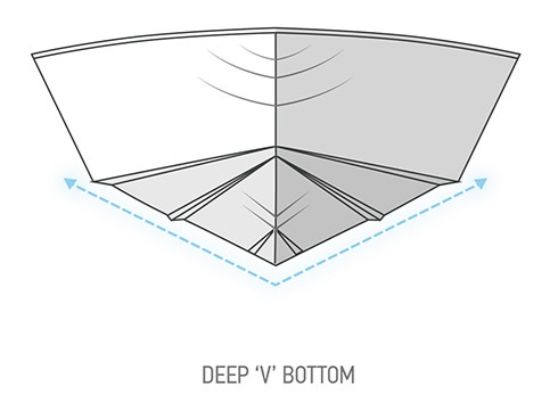
Deep-V hulls have that shape from bow to stern. – Campfire Collective
Why should you care about all of this? Because the next time you’re shopping for a boat, you want to make sure you pick the best one for your purposes. A good understanding of the boat’s hull design will play a huge roll in just how satisfied you ultimately are. So, here’s a quick run-down on basic hull designs, and the deadrise you’ll find in each.
Flat Bottom Boats
These are generally jon boats, some specialty boats like scooters, and some skiffs. As you might expect, their bottoms are flat — even though the bow bottom shape might have a steep deadrise.
Flat bottom boats are incredibly stable, have low draft and excellent weight-bearing characteristics. They also plane easily and usually require less power than similarly-sized boats with V-hulls. Plus, flat-bottom boats generally cost less because they’re easier to manufacture and ship.
However, a flat bottom is not going to ride very smoothly, nor will it be dry. Flat bottoms provide about the bumpiest, wettest ride on the water. Our little poem by W.S. is referring to flat bottom boats of one sort or another.
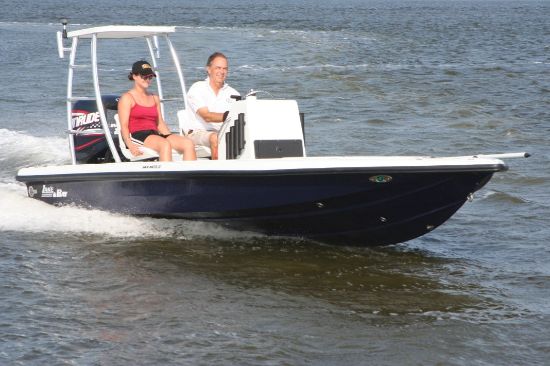
Flat bottom boats such as skiffs can plane easily and require less power but have bumpy rides.
Semi-V or Modified-V
Bay boats, many freshwater fishing boats, and most runabouts are semi-Vs. A semi-V hull is one with some V in the hull, but not enough to qualify as a deep-V. Most range between 17 and 20-degrees of deadrise measured at the transom, though there are some boats out there with less deadrise which could still accurately be called semi-Vs.
These are middle-of-the-road hulls. They aren’t the smoothest nor are they the bumpiest. They aren’t the driest nor are they the wettest. They aren’t the most stable nor are they the least stable. They are almost always more fuel-efficient than the deep-V hulls and they are more comfortable than boats with a deadrise angle at the transom from say 16-degrees to 10-degrees.
By focusing on the in-between, semi-V hulls are generally designed for certain bodies of water or certain boat types and sizes. They may be a compromise, but they may also be the best hull shape for the application. Their builders think they are.
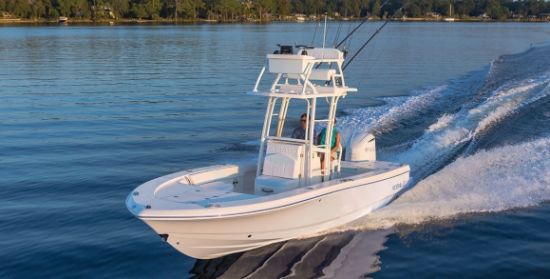
Bay boats and other semi-V hulls have some V in the hull but do not qualify as deep-V.
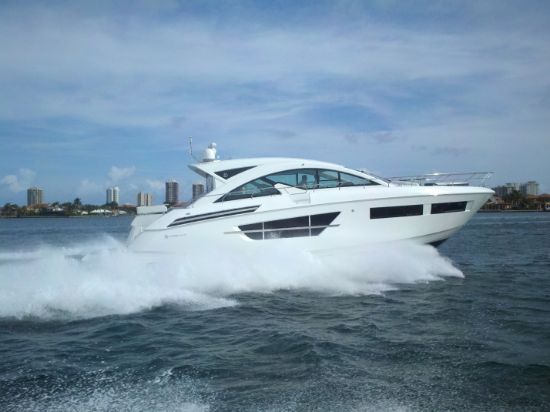
Deep-V hulls have 20 degrees of transom deadrise on up.
Variable-Degree Deadrise
Other than skiffs and bay boats, most boats today have a variable deadrise hull. A variable-degree deadrise hull is one that has different deadrise angles in different sections of the hull. As an example, they may have a deadrise of as much as 60-degrees deadrise at the forefoot to easily cut through waves and not pound.
Amidships, the deadrise will warp from the steep deadrise at the bow to an intermediate angle in the sections amidships. The angle of deadrise in this area is the most important in most boats. The builders rarely give out what the angles are here because this is the place of the secret sauce. It is here that most small planing hulls break the waves and ride when going fast. Typically, deadrise here is between 45 and 30-degrees, depending on the boat.
The aft sections of the boat are flatter to be more efficient, give the boat a better planing surface with more lift, and to dampen the roll inherent in the forward steep V angles.
Many variable-degree deadrise hulls do in fact ride exceptionally well, yet also exhibit good stability.
However, all variable-degree deadrise hulls are not created equally, and some perform much better or worse than others. To make matters more complex, some will perform better or worse when fully-loaded versus when they’re run light. The weight distribution of people and gear can also have a big impact on how smooth the boat may or may not be, particularly when it affects running angle.
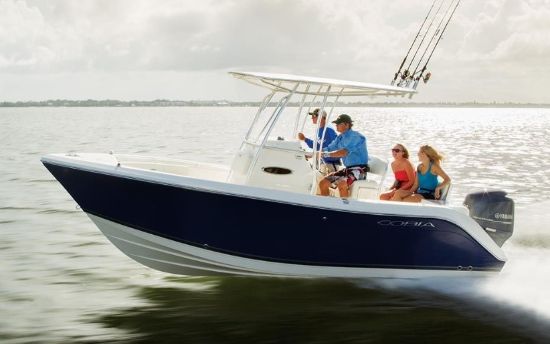
Variable-degree deadrise hulls have different amounts of deadrise from bow to stern.
Summary
When shopping for boats, consumers should ask the sales people the deadrise angles for the bow, amidships sections and at the transom for any boat being seriously considered. Then, they should consider the sea, lake or river conditions where they will be boating, and finally the kind of boating they will be doing. Any one of the hull shapes might be best for the intended application.